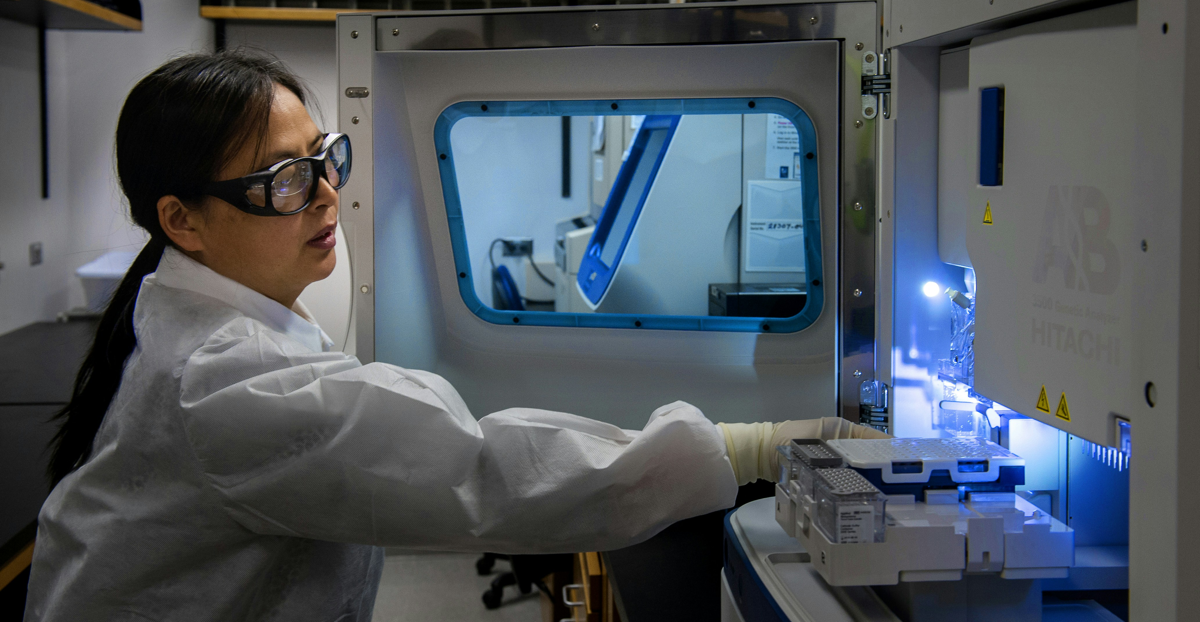Cleanroom Standards 2024 Guide
15th Mar 2024
Cleanrooms are essential in semiconductor manufacturing, pharmaceuticals, aerospace, and biotechnology industries, among others, where clean environments are necessary. These controlled environments are crucial for research, manufacturing, and production processes that require very low levels of environmental pollutants, such as dust, airborne microbes, aerosol particles, and chemical vapors. The idea of a cleanroom is not just to maintain a "clean" space but to create an area where the concentration of airborne particles is controlled to specific limits, ensuring the integrity and performance of sensitive products and processes.
It is essential for anyone involved in designing, implementing, or working within these environments to understand the various cleanroom standards. These standards provide a framework for classifying the cleanliness levels of cleanrooms and clean zones based on the number and size of particles allowed per air volume.
Whether you're a cleanroom technician, a facility manager, or simply interested in cleanroom operations, this guide will help you navigate the complexities of cleanroom standards and ensure you're well informed about the specifications and requirements that govern these specialized spaces.
The Basics of Cleanroom Standards
Cleanroom standards are necessary measures used to classify cleanrooms and clean zones based on their level of cleanliness, which is determined by the amount of airborne particles present. These standards are not arbitrary and are developed and published by reputable organizations such as the International Organization for Standardization (ISO) and the United States Federal Standard, FS209E. The primary goal of these standards is to ensure that environmental pollutants do not contaminate products manufactured in a clean environment. This is particularly crucial for products that require high levels of purity and sterility.
Commonly Referenced Standards
The current widely used standard for measuring air cleanliness is ISO 14644-1, which measures the number of particles per cubic meter at a specific particle size. An alternative standard is the FS209E, which classifies cleanrooms by the number of particles per cubic foot. While both standards are used for similar purposes, their classification metrics and level of detail differ.
ISO Cleanroom Standards

The International Organization for Standardization (ISO) defines cleanroom standards through the ISO 14644 series. ISO 14644-1, in particular, sets the stage for classifying the cleanliness of air in cleanrooms and clean zones. This part of the series focuses on airborne particle concentrations, providing a standardized method for determining cleanroom cleanliness levels.
ISO 14644-1 Classifications
ISO 14644-1 classifications range from ISO Class 1 to ISO Class 9. The classification is based on the number of particles measured in a cubic meter of air, where a lower class number indicates a cleaner environment. For example, ISO Class 1 allows no more than 12 particles per cubic meter that are 0.1µm or larger, and ISO Class 9 permits up to 35,000,000 particles per cubic meter that are 0.5µm or larger. This classification system ensures that industries adopt a global standard for consistent cleanroom performance and product manufacturing standards.
Criteria for Each Class
The criteria for each ISO class are determined by specifying the maximum allowable particle concentration for different particle sizes. The standard requires testing and monitoring to verify that a cleanroom meets the specified criteria for its class. This involves using particle counters to measure the concentration of airborne particles and comparing the results against the standards set for the chosen class.
US Federal Standard 209E (FS209E)
The US Federal Standard 209E (FS209E) set benchmarks for cleanroom air cleanliness regarding particle count measured in particles per cubic foot of air. The United States established FS209E as the precursor to the globally adopted ISO 14644-1 standards. While ISO standards have officially superseded FS209E, its legacy and influence persist, particularly in the United States, where it laid the groundwork for its cleanroom classification.
Overview of FS209E Classifications
FS209E classifications range from Class 1 to Class 100,000. The class number corresponds to the maximum number of particles, 0.5 micrometers or larger, allowed per cubic foot of air. For instance, a Class 100 cleanroom permits up to 100 particles per cubic foot of air, each 0.5µm or larger. This direct naming convention provided a straightforward way to understand the cleanliness level of a cleanroom.
Differences from ISO Standards
The primary difference between FS209E and ISO 14644-1 is their measurement units and classification approach. FS209E measures particle counts in cubic feet, while ISO 14644-1 uses cubic meters. Furthermore, FS209E’s classification system is linear (Class 1, 10, 100, etc.), making it simpler but less granular than the ISO system, which offers a more nuanced classification across a broader range of conditions.
Transitioning from FS209E to ISO 14644-1
The transition from the US Federal Standard 209E (FS209E) to the International Organization for Standardization's ISO 14644-1 reflects the global industry's move towards a unified approach to cleanroom classification. This shift was primarily motivated by the need for a standardized system that could be applied universally across industries and countries, facilitating easier compliance and benchmarking for international projects and collaborations.
Challenges and Considerations
One of the main challenges in transitioning from FS209E to ISO 14644-1 involved adapting to the different measurement units and classification specifics. Organizations had to recalibrate their monitoring equipment and revise their cleanroom design and maintenance protocols to align with the ISO standards. Additionally, there was a learning curve for personnel to understand the nuances of the new classifications and their implications for cleanroom operations.
Despite these challenges, the transition has been widely beneficial, offering a more detailed and flexible classification system that accommodates the diverse needs of modern industries. The ISO standards provide a comprehensive framework for cleanroom management, from design and testing to monitoring, ensuring a high level of air cleanliness and contamination control that supports quality and safety in sensitive manufacturing and research processes.
How to Determine the Right Cleanroom Standard for Your Needs

Choosing the right cleanroom standard is critical for meeting the specific requirements of your industry and ensuring the integrity of your products and processes. The decision between ISO 14644-1 and FS209E—or any other standard—depends on several factors, including the type of industry, the nature of the processes carried out in the cleanroom, and regulatory considerations.
Factors to Consider:
- Industry Requirements: Different industries have varying cleanliness requirements. For example, semiconductor manufacturing might require an ISO Class 3 cleanroom. In contrast, a packaging facility for medical devices might operate effectively within an ISO Class 7 or 8 environment.
- Regulatory Compliance: Some sectors are governed by strict regulations dictating cleanroom classification. Being familiar with these regulations is essential to ensure compliance and avoid legal issues.
- Process Sensitivity: The sensitivity of the processes conducted in the cleanroom should guide the selection of the cleanroom class. Higher sensitivity processes require cleaner environments to prevent product contamination.
- Cost Considerations: Higher cleanroom classifications (e.g., ISO Class 1-3) come with increased operational and maintenance costs. Balancing the need for cleanliness with budget constraints is crucial in selecting the appropriate cleanroom standard.
Products and Materials in Cleanrooms: Influence of Standards
Cleanrooms are not just about the air quality and particle count; the types of products and materials used within these controlled environments are equally critical. These products and materials must adhere to stringent standards to prevent contamination and ensure the integrity of the cleanroom's purpose. The selection of these items is significantly influenced by the cleanroom standards (e.g., ISO 14644-1, FS209E) that the organization follows.
Types of Products and Materials:
- Cleanroom Apparel: Specialized garments like coveralls, hoods, boots, and gloves designed to minimize particle generation and resist permeation by various contaminants.
- Cleaning Supplies: Specific detergents, disinfectants, and equipment made for cleanroom environments that do not contribute to the particle load.
- Furniture and Fixtures: Made from materials that do not shed particles or trap contaminants, such as stainless steel or coated aluminum.
- Air Handling Systems: HEPA and ULPA filters, which are crucial for maintaining the required particle counts, vary in efficiency depending on the cleanroom classification.
- Packaging Materials: Materials that prevent contamination during the storage and transportation of cleanroom-manufactured products.
Influence of Standards:
The specific cleanroom standard an organization adheres to can significantly influence the choice of products and materials. For instance, a cleanroom operating under ISO Class 5 standards will require materials and products that adhere to more stringent criteria compared to an ISO Class 8 cleanroom. This is due to the lower allowable particle count and higher cleanliness level required in the former.
Final Thoughts on Cleanroom Standards
Understanding and adhering to cleanroom standards is paramount for industries that rely on controlled manufacturing, research, and development environments. The transition from FS209E to ISO 14644-1 represents a significant step towards global standardization, offering a comprehensive cleanroom classification and maintenance framework. Organizations can ensure the integrity of their products and processes by selecting the appropriate cleanroom standard for your needs, considering industry requirements, regulatory compliance, process sensitivity, and cost. As cleanroom technologies and standards evolve, staying informed and compliant is crucial for success in any field requiring controlled environments.

